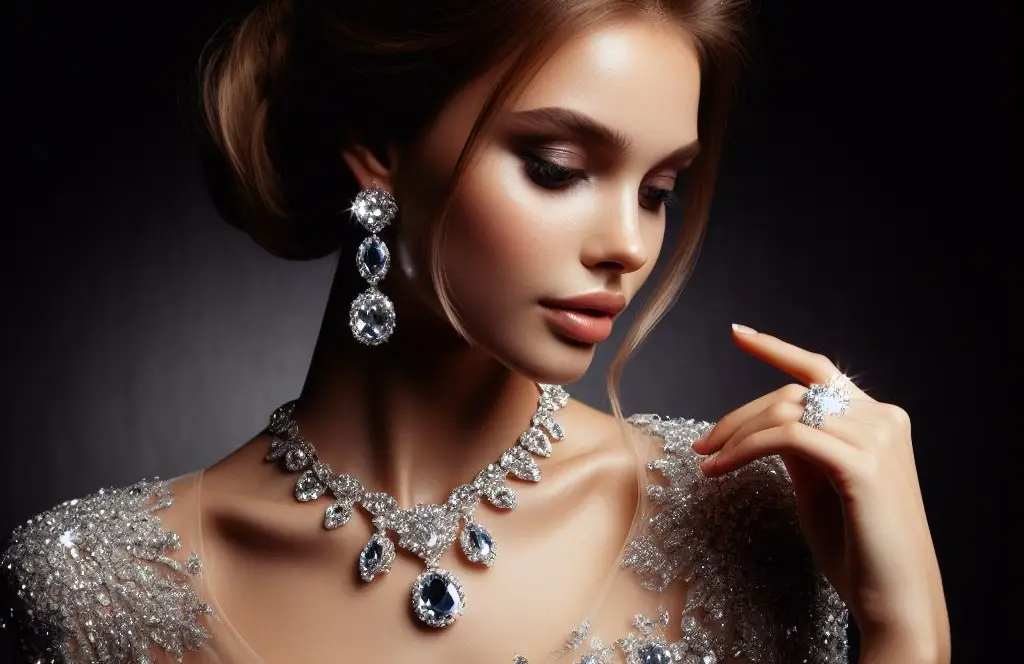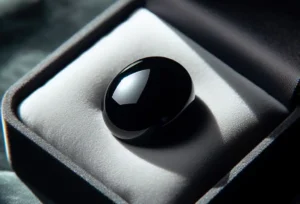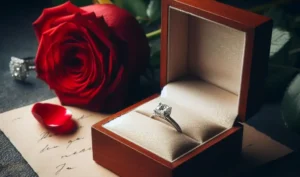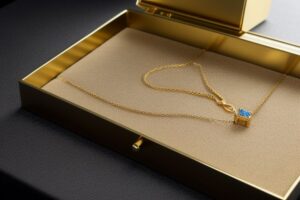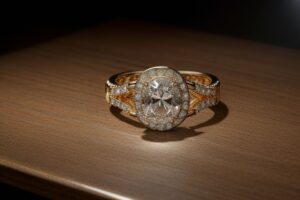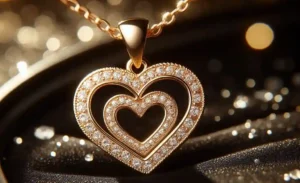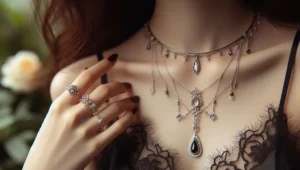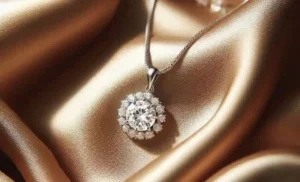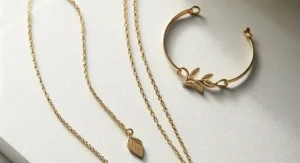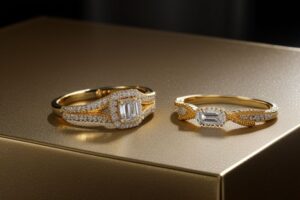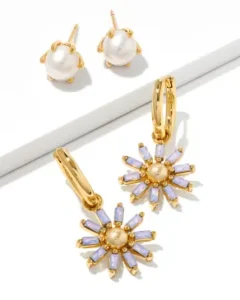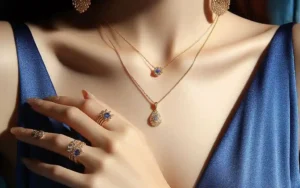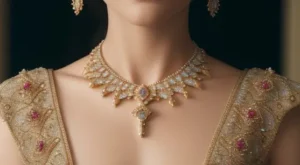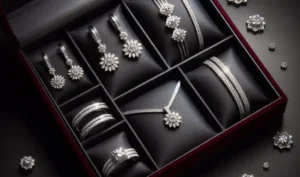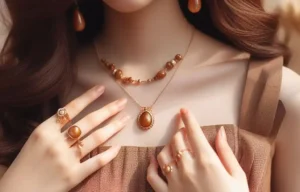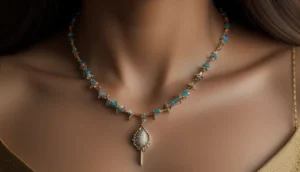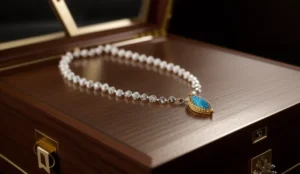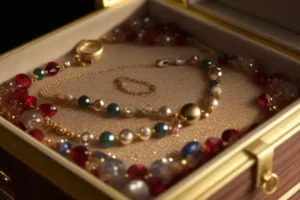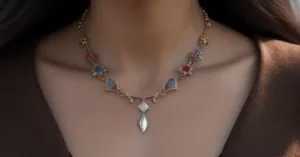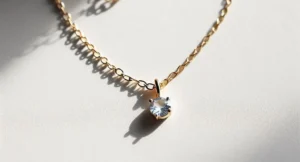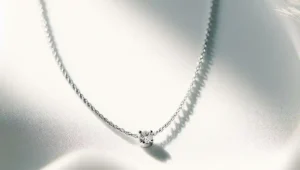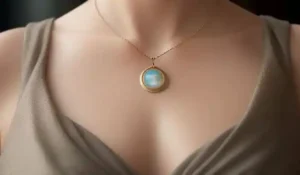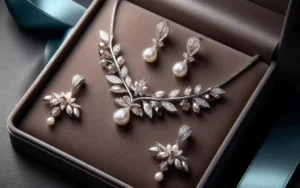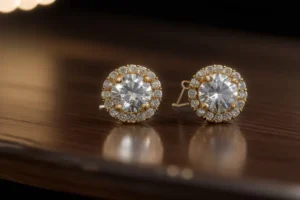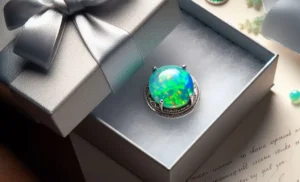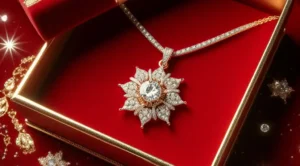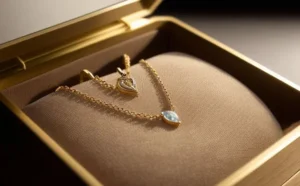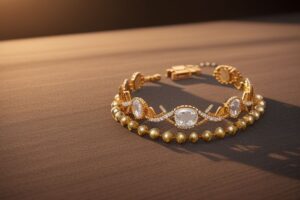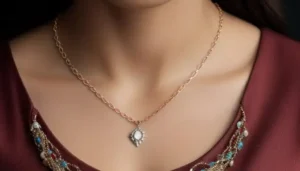Are Swarovski Diamonds Real? In the world of fine jewelry and dazzling adornments, the name Swarovski stands out as a beacon of innovation and craftsmanship.
However, there’s a shimmering debate that often surrounds these iconic crystals: Are Swarovski diamonds genuine?
This question has intrigued enthusiasts and consumers alike, leading us on a sparkling journey to uncover the truth behind Swarovski’s mesmerizing creations.
Are Swarovski Diamonds Real?

No, Swarovski diamonds are not real diamonds. Swarovski crystals are expertly crafted facsimiles that mimic the appearance of diamonds to an impressive degree but do not share their chemical composition or natural origins.
Swarovski has developed a proprietary blend of quartz, sand, and minerals to produce its famous crystals, which are known for their extraordinary brilliance and clarity. These crystals undergo a unique cutting and polishing process that allows them to reflect light in a way that closely resembles the sparkling allure of genuine diamonds.
However, it is important to distinguish between the physical and aesthetic qualities of Swarovski crystals and the geological properties of real diamonds, which are carbon-based and formed under extreme heat and pressure over billions of years beneath the Earth’s surface.
Swarovski’s creations, while beautiful and expertly crafted, are synthetic and designed to offer an accessible alternative to the natural luxury of diamonds.
Unveiling the Essence of Swarovski Diamonds
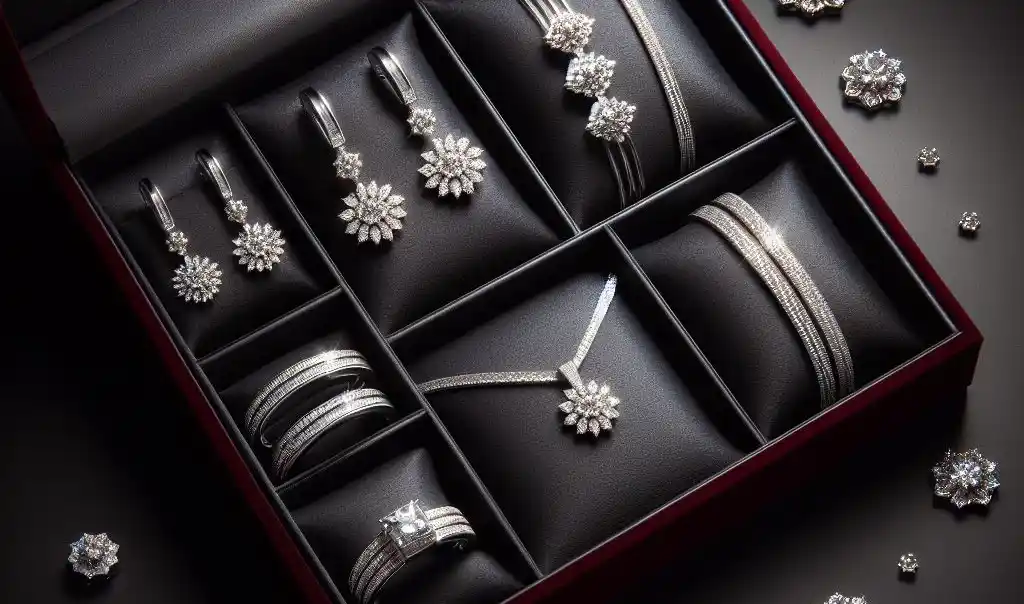
At the core of Swarovski’s brilliance is a meticulous production process that melds quartz, sand, and select minerals into its signature crystals. These ingredients, combined in a precise ratio and under strict conditions, give birth to crystals that, while softer than natural diamonds, dazzle with a fire and brilliance akin to the real thing.
The unique Swarovski method includes not just the materials but also the cutting-edge technology and cutting techniques that have been refined over the years. Each crystal undergoes a series of cuts designed to maximize light reflection and dispersion, a hallmark of the Swarovski brand.
This strategic approach to crystal creation results in pieces that exhibit unparalleled sparkle, captivating those who seek the luster of diamonds without their hefty price tag. By prioritizing such detail in cut and clarity, Swarovski crafts crystals that serve as a testament to the brand’s dedication to beauty and innovation in the realm of decorative gemstones.
The Historical Craftsmanship of Swarovski
Swarovski’s journey into the world of crystal craftsmanship began in the picturesque landscapes of Austria, where, in 1895, Daniel Swarovski set forth a vision that would redefine the industry. His pioneering spirit led to the creation of an electric cutting machine, a marvel of the era that facilitated the production of crystal with an unmatched precision and brilliance.
This innovation laid the foundation for the Swarovski legacy, transforming mere crystal into coveted treasures that mirrored the allure of diamonds.
Over the decades, Swarovski has steadfastly adhered to its founder’s ethos of innovation and quality. The brand’s dedication to excellence is evident in its relentless pursuit of refining and enhancing its production techniques. This commitment ensures that each crystal embodies the pinnacle of craftsmanship, reflecting both the heritage and the future of the Swarovski name.
In the heart of Swarovski’s success lies not just in the technological advancements it has embraced but in the preservation of artisanal techniques that have been passed down through generations. The fusion of tradition and innovation continues to be a hallmark of the brand, enabling it to capture the essence of luxury and beauty in every facet of its creations.
As Swarovski navigates the future, it remains anchored in the rich legacy of craftsmanship that Daniel Swarovski championed, a testament to the enduring appeal and quality of its crystals.
The Brilliance Compared: Swarovski Crystals vs. Natural Diamonds
When evaluating Swarovski crystals alongside natural diamonds, it’s crucial to assess the distinct characteristics that define their brilliance and visual appeal. Swarovski crystals, crafted with meticulous precision, are designed to maximize light reflection, giving them a radiant sparkle that can captivate at first glance.
Their sophisticated cut and clarity allow them to imitate the light dispersion of diamonds, creating a spectacle of colors and brightness that is profoundly striking.
On the other hand, natural diamonds boast a timeless allure, rooted in their natural origin and the incredible journey they undergo from extraction to refinement. Diamonds are renowned not only for their unparalleled hardness but also for their unique ability to reflect and refract light, giving them a distinctive sparkle that has been celebrated for centuries.
The contrast in brilliance between Swarovski crystals and natural diamonds can be appreciated through their different attributes. While Swarovski’s creations offer an immediate visual impact, characterized by their intense sparkle and the sheer variety of colors and cuts available, diamonds provide a more subtle, enduring beauty that speaks to their storied past and geological rarity.
This comparison underscores the fact that the choice between Swarovski crystals and natural diamonds hinges on personal preference and the desired expression of elegance and luxury.
The Value Proposition: Pricing and Permanence
Swarovski crystals, renowned for their captivating sparkle and precision craftsmanship, present a compelling value proposition for those seeking the luxury of high-quality gemstones without the steep price tag of natural diamonds.
These crystals are accessible at a fraction of the cost, making them an attractive option for adding elegance and glamour to everyday wear and special occasions alike. Their affordability opens up a world of design possibilities, allowing for more expansive and experimental use in jewelry and fashion.
However, when it comes to durability and longevity, Swarovski crystals, though resilient, do not match the inherent hardness of natural diamonds. Diamonds, formed under the earth’s surface over billions of years, are the hardest known natural material, making them not only a symbol of enduring beauty but also of permanence.
This difference in material properties means that while Swarovski crystals will retain their luster and appeal with proper care, they may be more susceptible to scratches and wear over time compared to their diamond counterparts.
For consumers, this distinction highlights the importance of considering both aesthetic desires and functional needs when selecting between Swarovski crystals and natural diamonds. While Swarovski offers immediate visual impact and creative versatility at an accessible price point, the lasting legacy and resilience of diamonds reflect a different kind of value.
Ethical Considerations and Sustainability
In the evolving landscape of consumer consciousness, the demand for ethically sourced and sustainably manufactured products has surged, placing a spotlight on the practices behind the sparkle. Swarovski has actively addressed these concerns by integrating more sustainable production methodologies and aiming for transparency in the sourcing of its raw materials.
The company’s efforts to minimize its environmental footprint include optimizing energy use, reducing water consumption, and striving for zero waste in its manufacturing processes. Furthermore, Swarovski’s commitment to social responsibility extends to its workforce and the communities in which it operates, ensuring fair labor practices and community engagement initiatives.
Contrastingly, the natural diamond industry has faced scrutiny over ethical concerns, including the exploitation of labor and the financing of conflict through diamond sales, known as “blood diamonds.” Swarovski’s approach presents an alternative for consumers who prioritize ethical considerations in their purchasing decisions.
By choosing Swarovski crystals, consumers can enjoy the beauty and elegance of sparkling gems, knowing they are supporting a brand that values sustainability and ethical responsibility. This alignment with ethical consumption trends not only reflects a growing consumer expectation but also underscores Swarovski’s role as a forward-thinking leader in the decorative gemstone industry.
The Role of Swarovski Crystals in Fashion and Design
Swarovski crystals have seamlessly woven themselves into the fabric of fashion and design, becoming indispensable assets for designers seeking to add a layer of sophistication and sparkle to their creations.
Their versatility and radiant beauty make them a favorite for embellishing everything from high-fashion runway pieces to ready-to-wear collections, offering a touch of glamour that is both accessible and captivating.
These crystals serve as focal points in accessories such as earrings, necklaces, and bracelets, transforming ordinary items into statement pieces that catch the eye and ignite the imagination.
Beyond the realm of personal adornment, Swarovski crystals find their place in interior design, adding an element of luxury to furniture, lighting fixtures, and decorative objects. Their ability to reflect light and color enhances the aesthetic appeal of spaces, creating environments that are both elegant and inviting.
In the dynamic world of fashion and design, Swarovski crystals continue to inspire innovation, enabling designers to experiment with new styles and push the boundaries of creativity. Their contribution to the industry is not just about adding visual interest; it’s about creating experiences and emotions, elevating the ordinary to extraordinary.
Through their integration into diverse design disciplines, Swarovski crystals underscore the brand’s influence and importance, proving that their role extends far beyond mere decoration to becoming a source of inspiration and a hallmark of refined taste.
Making an Informed Choice: Swarovski vs. Diamonds
When it comes to selecting between Swarovski crystals and natural diamonds, the decision is deeply personal, reflecting individual style, budgetary considerations, and ethical values.
Those who value the unparalleled hardness and historical significance of diamonds, as well as their investment potential, may lean towards these natural wonders for milestone events such as engagements and anniversaries.
Diamonds symbolize a commitment that is as enduring as the stones themselves, offering a legacy that can be passed down through generations.
Conversely, Swarovski crystals present a versatile and vibrant alternative for those who appreciate the art of fashion and design, as well as for consumers who are conscious of their environmental and social impact.
These crystals provide a spectrum of colors and cuts that allow for creative expression in everyday wear and special occasions, without the significant financial commitment required by diamonds. The affordability of Swarovski crystals makes them an attractive option for those looking to diversify their jewelry collection with pieces that can be adapted to various styles and trends.
In essence, the choice between Swarovski crystals and natural diamonds hinges on what the consumer values most: the timeless tradition and durability of diamonds, or the innovative design and ethical appeal of Swarovski crystals. Each has its own place in the world of adornment, catering to different tastes, occasions, and principles.
The Future of Swarovski: Beyond the Sparkle
Swarovski’s journey into the future is illuminated by its storied past, marked by innovation and a deep commitment to ethical practices. As the brand forges ahead, it is clear that its legacy of luxury and craftsmanship will continue to evolve, embracing new challenges and opportunities.
The integration of cutting-edge technology and sustainable practices signals a promising direction, where beauty and responsibility converge. Swarovski’s ventures into diverse fields such as lighting, architecture, and entertainment showcase its versatility and willingness to transcend traditional boundaries.
By maintaining a focus on environmental stewardship and ethical production, the brand is set to redefine the role of luxury in the modern world. This forward-thinking approach not only enhances Swarovski’s appeal among a new generation of consumers but also solidifies its position as a leader in the decorative crystal industry.
As we look to the horizon, Swarovski’s enduring brilliance promises to shine not only through its products but through its impact on society and the environment.

